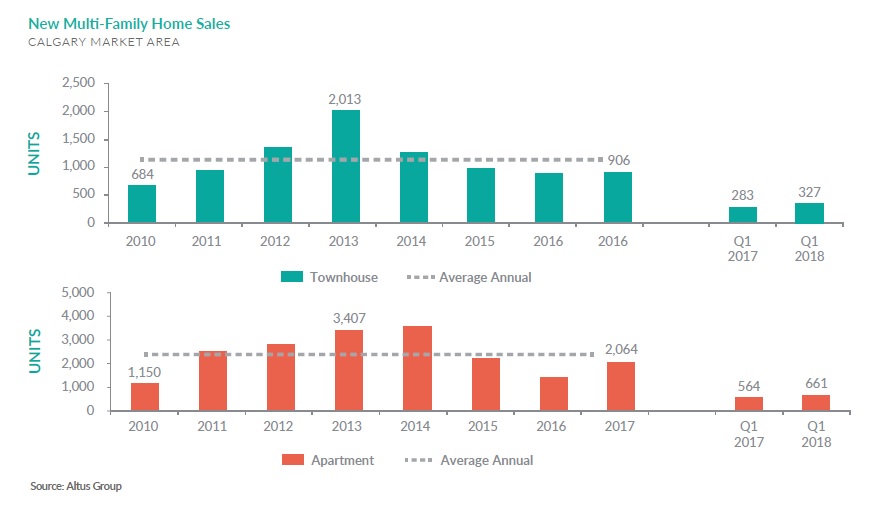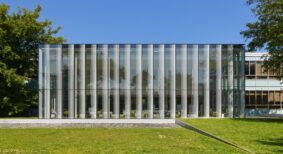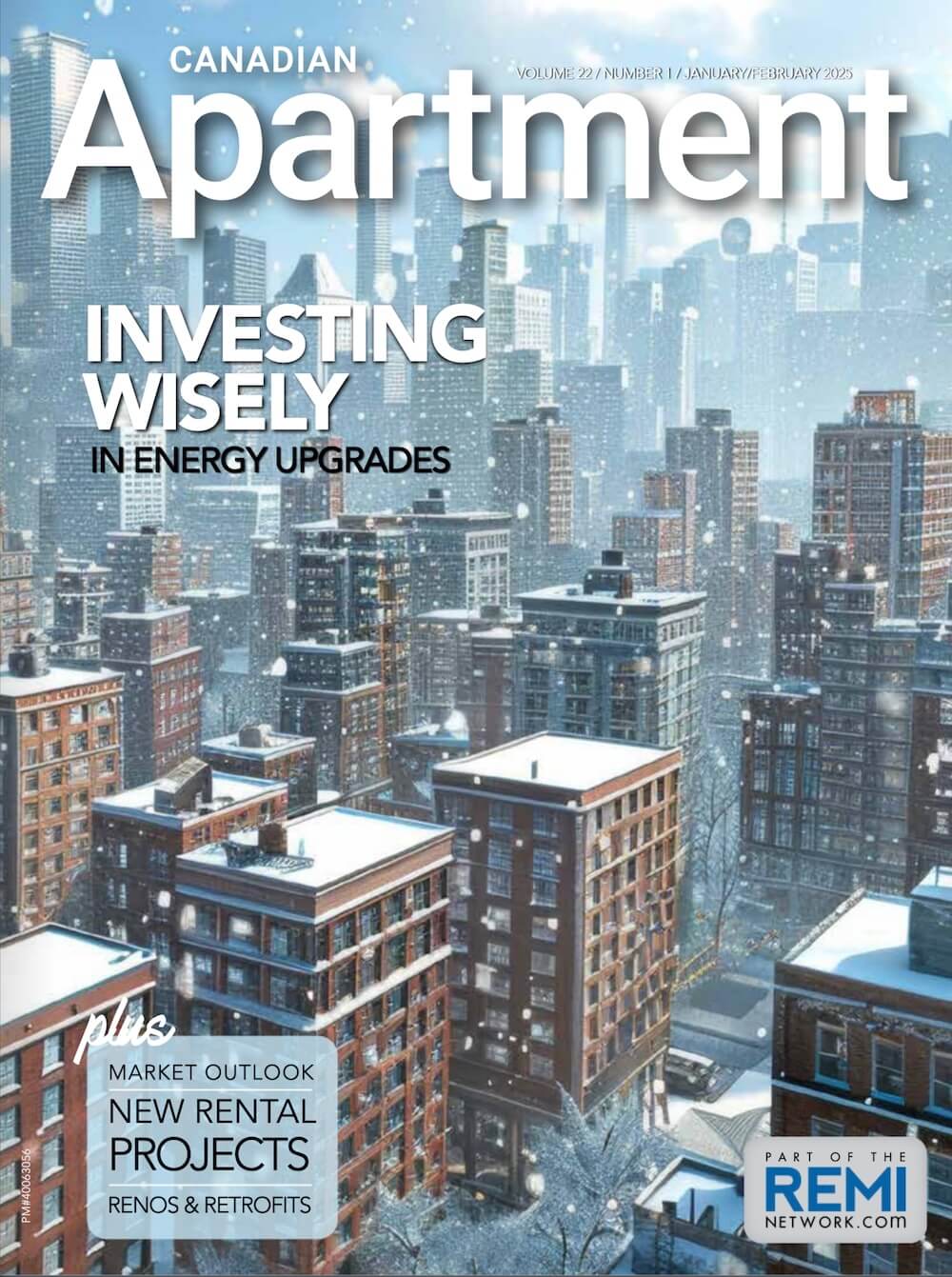Recent data released from the Altus Group indicates that the Alberta market is showing signs of economic recovery. Alberta’s two largest cities both experienced a strong 2017 despite the breakdown of investment dollars differing heavily per sector.
While the apartment sector in Calgary saw a significant improvement last year, increasing by 17 per cent on the back of a particularly strong fourth quarter, the office sector suffered the largest dollar drop, falling by $230 million. Meanwhile in Edmonton, the retail and office sectors surged while apartment sales entering 2018 were off to a slower start.
Edmonton apartment market highlights
Townhouse and apartment sales in Edmonton totaled 2,120 units in 2017—a 35 per cent improvement from 2016, but still well below the recent peak of almost 3,400 units in 2014, according to Altus Group data.
The improvement was primarily due to new apartment units (up by 63 per cent) although townhouse sales also posted a modest gain (7 per cent) at least in part attributable to builder incentives for standing inventory.
The severe winter weather and tighter lending criteria discouraged new project launches in Q1, which resulted in a sharp drop in sales in Q1 2018 compared to Q1 2017.
While total multifamily sales have trended down (Q1 marked the 4th straight quarter of decline), the slow start to the year is expected to increase pressure on builders for continued incentives—particularly in the suburban apartment market, which has seen the supply of vacant and unsold inventory increase.
The West submarket was the only Edmonton area to not record an improvement in new multifamily sales in 2017. All submarkets were down in Q1 2018 compared to a year earlier.
Calgary’s residential land market
Residential land is where Calgary received much of its investment last year, compared to Edmonton where the office sector posted the largest increase in 2017.
The residential land market posted the largest absolute volume year-over-year increase—more than doubling to $561 million. This pushed the total value of land sales over the $1 billion threshold for the first time since 2014.
Medium density land was the largest contributor, with $183 million, accounting for almost one third of overall residential land investment. High density land posted the largest year-over-year increase, more than quintupling to $128 million.
Calgary Q1 2018 transactions
First-quarter investment activity in Calgary’s multifamily market was largely consistent with that seen one year prior, at eight transactions completed versus nine during Q1 2017. Dollar volume, however, decreased to $26.4 million versus $30 million as a result of smaller properties, averaging 15 units, changing hands.
The largest deal of Q1 2018 was Metropia’s acquisition of Trinity Hills, a 24-acre high density residential development site.
The most significant multi-residential transaction was Timbercreek’s purchase of a 44-unit apartment building (“Hillcrest Manor”) for $10 million, accounting for about one-third of the total apartment investment in the quarter.

Renting vs. buying
Homebuying intentions are down slightly in Calgary, according to Altus Group’s FIRM Survey. While many younger renters indicated they would prefer to buy a home, 26 per cent said saving for a downpayment is delaying that process.
Changes in mortgage lending criteria over the past year have made saving for a larger downpayment a necessity for many renters in order to be able to qualify for a mortgage. The current economic situation is a deterrent for many potential first-time buyers, with only 1 in 6 renters under 45 indicating that they simply prefer the renter lifestyle.
Download the complete reports at: http://www.altusgroup.com







